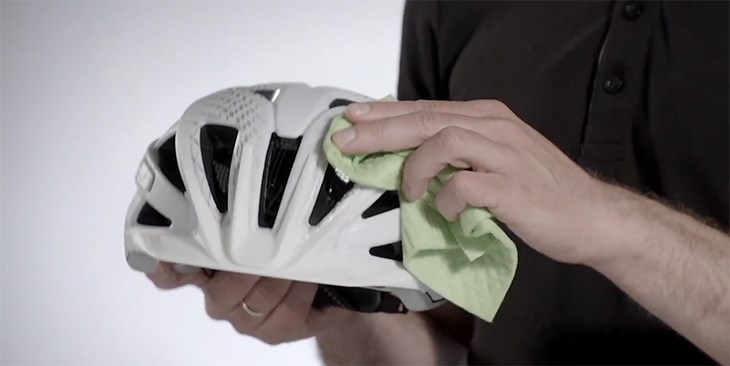Helmets are essential safety equipment for various activities, from cycling to motorcycling, sports, and construction work. To ensure your helmet remains effective and durable, proper storage is crucial. Incorrect storage can compromise the structural integrity and protective features of your helmet, reducing its lifespan. This comprehensive guide outlines the best practices for storing your helmet correctly to maintain its functionality and extend its lifespan.
Why Proper Helmet Storage Matters
Maintaining Structural Integrity
Helmets are designed to absorb impacts and protect your head. However, prolonged exposure to environmental factors like heat, moisture, or UV rays can weaken their materials. Proper storage minimizes such exposure, preserving the helmet’s strength.
Preventing Wear and Tear
Scratches, dents, and other damages can occur when helmets are left in inappropriate places. Storing your helmet in a safe, designated spot helps prevent accidental damage and keeps it looking and functioning like new.
Ensuring Hygiene
Helmets accumulate sweat, dirt, and bacteria over time. Proper storage, combined with regular cleaning, helps maintain hygiene and prevents unpleasant odors or skin irritations.

Steps to Store Your Helmet Correctly
1. Clean Your Helmet Before Storage
Before storing your helmet, always clean it thoroughly to remove dirt, sweat, and debris. Follow these steps:
- Remove the inner padding and liners (if detachable) and wash them according to the manufacturer’s instructions.
- Wipe down the exterior shell with a soft cloth and mild soap solution.
- Dry all components completely to prevent mold or mildew growth.
2. Choose the Right Location
The storage location plays a significant role in maintaining your helmet’s condition. Consider the following factors:
Cool and Dry Environment
- Avoid areas with high humidity or extreme temperatures, such as basements, attics, or near heaters.
- Store your helmet in a room-temperature environment, away from direct sunlight and heat sources.
Low Traffic Area
- Select a spot where the helmet won’t be knocked over or accidentally damaged.
- Shelves, cabinets, or dedicated hooks are excellent options for keeping helmets safe.
3. Use a Helmet Bag or Case
Invest in a helmet bag or hard case for added protection. These accessories shield your helmet from dust, scratches, and impacts. Many helmets come with a bag included, but universal options are also widely available.
4. Avoid Hanging by the Straps
While hanging your helmet might seem convenient, avoid doing so by its straps. Prolonged stress on the straps can weaken them over time. Instead, use a dedicated helmet rack or shelf.
5. Protect from UV Exposure
Prolonged exposure to sunlight can degrade the materials in your helmet, particularly the outer shell and foam. Always store your helmet in a shaded area or inside a protective case to prevent UV damage.
6. Keep Away from Chemicals
Avoid storing your helmet near chemicals, oils, or cleaning agents. These substances can cause the helmet’s materials to deteriorate, affecting its protective properties.
7. Label and Organize
If you own multiple helmets for different activities, label them and organize your storage space. This ensures easy access while reducing the risk of damage from stacking or overcrowding.

Common Mistakes to Avoid
Leaving the Helmet in Your Vehicle
- Why it’s bad: Vehicles can become excessively hot or cold, especially during extreme weather. These conditions can warp the helmet’s materials or reduce its effectiveness.
- Solution: Always take your helmet indoors when not in use.
Storing on Uneven Surfaces
- Why it’s bad: Uneven surfaces can cause the helmet to roll off or become unbalanced, leading to scratches or impacts.
- Solution: Store your helmet on a flat, stable surface.
Ignoring Cleaning and Maintenance
- Why it’s bad: A dirty helmet stored for extended periods can develop unpleasant odors or harbor bacteria.
- Solution: Regularly clean your helmet and ensure it is dry before storage.
Extending Your Helmet’s Lifespan
Regular Inspections
Periodically inspect your helmet for signs of wear, including cracks, dents, or loose padding. Address any issues promptly, and replace the helmet if necessary.
Follow Manufacturer’s Guidelines
Each helmet comes with specific care and storage instructions. Always follow the manufacturer’s recommendations to ensure optimal performance and durability.
Replace When Necessary
Helmets have a limited lifespan, even with proper care. Most manufacturers recommend replacing helmets every 3-5 years or after a significant impact. Storing your helmet correctly can maximize its usable lifespan but won’t extend it indefinitely.
Use a Helmet Display Stand
For frequent users, a helmet display stand can be a convenient and safe storage solution. These stands keep the helmet upright, ensuring proper ventilation and minimizing contact with surfaces.
Benefits of Proper Helmet Storage
- Enhanced Safety: A well-maintained helmet performs better during impacts.
- Cost Savings: Proper care reduces the need for frequent replacements, saving money in the long run.
- Improved Hygiene: Clean and dry storage prevents odor buildup and skin irritations.
- Aesthetic Longevity: Preventing scratches and damage keeps your helmet looking new.
Conclusion
Storing your helmet correctly is essential for maintaining its protective qualities and extending its lifespan. By following these simple yet effective steps, you can ensure your helmet remains in top condition for years to come. Whether you’re a motorcyclist, cyclist, or athlete, investing time in proper helmet care is a small effort that yields significant benefits. Prioritize proper storage to protect both your safety and your investment.


